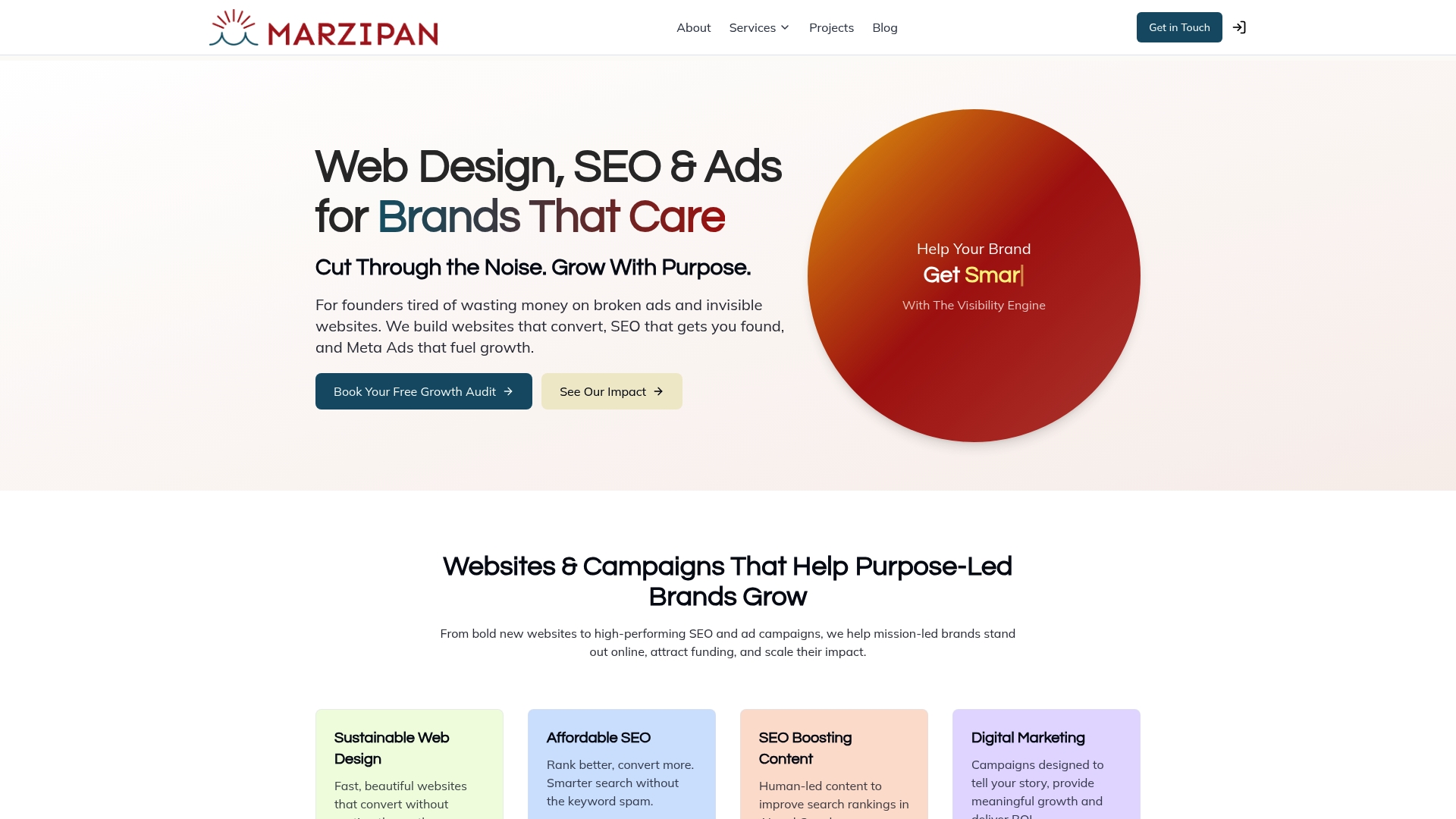7 Types of Web Design You Need to Know
Web design shapes the way we experience information online. While most people assume that modern websites owe their magic to fancy coding tricks, the real surprises start with the basics. For instance, over 50 percent of global web traffic now comes from mobile devices, and yet some of the simplest design choices can make the biggest impact on performance and user satisfaction. Scroll down and you might just rethink what great web design actually looks like.
Table of Contents
- Static Web Design: The Basics Explained
- Dynamic Web Design: Enhancing User Interaction
- Responsive Web Design: Adapting to All Devices
- Adaptive Web Design: Optimising for Different Screens
- Single Page Web Design: Streamlined User Experience
- Flat Web Design: The Minimalist Trend
- Material Web Design: Bringing Depth and Realism
Quick Summary
| Takeaway | Explanation |
|---|---|
| Static websites are fast and secure | They load quickly due to minimal server demands and offer enhanced security with fixed content. |
| Dynamic designs provide personalised experiences | These websites adapt content based on user interactions, offering tailored engagement and real-time updates. |
| Responsive design is essential for mobile traffic | With over 50% of web traffic from mobile, responsive websites ensure content displays well on any device. |
| Single-page applications enhance user interaction | SPAs eliminate page reloads, delivering smoother navigation and faster content loading for better user retention. |
| Material design improves visual engagement | This approach uses depth and motion to create intuitive interfaces, enhancing user experience through visual cues. |
1: Static Web Design: The Basics Explained
Static web design represents the foundational approach to creating websites with fixed, unchanging content. Unlike dynamic websites that generate content on the fly, static web pages remain consistent for every user. These websites are essentially simple HTML documents that display the same information to all visitors, without real-time personalisation or interactive elements.
At its core, static web design involves creating individual HTML pages where each page is a separate file with predetermined content. Web designers craft these pages using standard web technologies like HTML, CSS, and basic JavaScript. The simplicity of static websites makes them incredibly fast to load and straightforward to develop.
Key characteristics of static web design include:
- Consistent content for all users
- Minimal server-side processing requirements
- Lower hosting costs
- Excellent performance and quick page load times
- Enhanced security due to limited dynamic functionality
Static websites are particularly suitable for businesses and organisations that require simple, information-focused web presences. Learn more about how web design impacts business communication and understand why some organisations prefer this streamlined approach.
The technical implementation of static web design requires proficiency in front-end web technologies. Developers typically use HTML to structure content, CSS to style the pages, and minimal JavaScript to add basic interactivity. Each page is manually coded and does not change unless directly modified by a web developer.
Modern static web design has evolved with the emergence of static site generators like Jekyll, Hugo, and Gatsby. These tools allow developers to create more sophisticated static websites with templating systems, making website maintenance more efficient while preserving the fundamental simplicity of static web design.
While static websites might seem limited compared to dynamic alternatives, they offer significant advantages for specific use cases such as portfolios, informational sites, documentation pages, and small business websites that do not require frequent content updates.
2: Dynamic Web Design: Enhancing User Interaction
Dynamic web design represents a sophisticated approach to creating interactive and personalised web experiences that adapt in real-time to user interactions and preferences. Unlike static websites, dynamic web pages generate content dynamically, allowing for personalised user journeys and real-time data updates.
At the heart of dynamic web design are server-side programming languages and databases that enable websites to change content instantaneously. Technologies like PHP, Python, Ruby, and frameworks such as Ruby on Rails, Django, and Laravel power these complex web applications. Explore more about our web design workflow process to understand how these technologies integrate.
Key characteristics of dynamic web design include:
- Content that updates automatically
- User-specific personalisation
- Interactive features and real-time modifications
- Complex backend database interactions
- Seamless user authentication systems
Dynamic websites leverage various technologies to create responsive and adaptive experiences. Content Management Systems (CMS) like WordPress, Drupal, and Joomla exemplify dynamic web design principles, enabling non-technical users to manage and update website content without direct coding knowledge.
Web applications such as social media platforms, e-commerce sites, and online banking portals rely heavily on dynamic web design. These platforms require complex backend systems that can handle user registrations, secure transactions, personalised recommendations, and instantaneous content generation.
From a technical perspective, dynamic websites use server-side scripts to process user requests, interact with databases, and generate HTML content on the fly. This means each page can be unique, tailored to individual user profiles, browsing history, or specific interaction patterns.
The primary advantage of dynamic web design is its flexibility and ability to provide rich, interactive user experiences. However, this complexity comes with increased development time, higher hosting costs, and potentially slower page load speeds compared to static websites. Developers must carefully balance interactive features with performance considerations to create optimal user experiences.
3: Responsive Web Design: Adapting to All Devices
Responsive web design represents a critical approach to creating websites that seamlessly adjust and display optimally across various screen sizes and device types. This design philosophy ensures that web content looks visually appealing and functions perfectly whether viewed on desktop computers, tablets, smartphones, or emerging device technologies.
Fluid grid layouts and flexible image techniques are fundamental to responsive web design. These approaches allow web elements to resize proportionally, maintaining design integrity across different screen resolutions. Dive deeper into understanding web design fundamentals to grasp the nuanced strategies behind responsive design.
Key principles of responsive web design include:
- Flexible grid-based layouts
- Responsive images and media
- CSS media query implementations
- Touch-friendly navigation elements
- Performance optimization across devices
Technically, responsive web design relies heavily on CSS3 media queries, which enable developers to apply different styling rules based on device characteristics such as screen width, height, orientation, and resolution. This means a single website can dynamically adjust its layout and content presentation without requiring separate mobile or desktop versions.
Modern web browsers and frontend frameworks like Bootstrap, Foundation, and Tailwind CSS have significantly simplified the implementation of responsive design techniques. These tools provide pre-built responsive components and grid systems that accelerate website development while ensuring cross-device compatibility.
The proliferation of mobile internet usage has made responsive web design not just a design trend, but a critical necessity. With over 50% of global web traffic originating from mobile devices, websites must deliver consistent user experiences regardless of the accessing device.
Beyond visual adaptability, responsive design also impacts search engine optimization (SEO) and user engagement. Google and other search engines prioritise mobile-friendly websites in search rankings, making responsive design a strategic imperative for businesses seeking online visibility.
By prioritising flexible, device-agnostic design principles, responsive web design ensures that websites remain accessible, readable, and functional across the ever-expanding landscape of digital devices.
4: Adaptive Web Design: Optimising for Different Screens
Adaptive web design offers a strategic approach to creating websites that provide tailored experiences across different devices by designing multiple fixed layouts for specific screen sizes. Unlike responsive design, which uses fluid grids, adaptive design creates distinct versions of a website optimised for predetermined device categories.
Precise device targeting and layout customisation are the hallmarks of adaptive web design. This approach enables web designers to craft pixel-perfect experiences that respond to specific device characteristics. Learn more about future-proof web design strategies to understand how adaptive techniques enhance user experiences.
Key characteristics of adaptive web design include:
- Predefined layout breakpoints
- Device-specific content presentation
- Enhanced performance for targeted devices
- Customised user interface elements
- Precise control over visual hierarchy
The technical implementation of adaptive design involves creating multiple CSS stylesheets that load based on detected screen dimensions. When a user accesses a website, server-side or client-side detection mechanisms identify the device type and serve the most appropriate layout. This approach allows for highly optimised experiences across smartphones, tablets, desktop computers, and emerging device categories.
Adaptive web design provides granular control over how content appears on different screens. Designers can make nuanced decisions about image sizes, navigation structures, and interactive elements for each device category. This level of customisation ensures that users receive an experience precisely tuned to their device’s capabilities and limitations.
While adaptive design offers exceptional control, it requires more development effort compared to responsive approaches. Web designers must create and maintain multiple layout versions, which increases complexity and development time. However, for websites requiring pixel-perfect experiences or serving diverse user groups, the additional investment can yield significant user experience benefits.
Modern web development tools and frameworks increasingly support adaptive design techniques, making implementation more streamlined. By prioritising user experience across diverse device ecosystems, adaptive web design represents a sophisticated approach to digital interface development.
5: Single Page Web Design: Streamlined User Experience
Single Page Web Design represents a modern approach to creating seamless, interactive digital experiences where all content dynamically loads within a single HTML page. Unlike traditional multi-page websites, single page applications (SPAs) eliminate page reloads, providing users with smooth, app-like navigation and instantaneous content transitions.
JavaScript frameworks like React, Angular, and Vue.js have revolutionised single page web design, enabling developers to create complex, dynamic interfaces that feel incredibly responsive. Explore how we approach innovative web design to understand the potential of cutting-edge digital experiences.
Key characteristics of single page web design include:
- Seamless content transitions
- Reduced server load and bandwidth usage
- Enhanced user engagement
- Faster interaction speeds
- Mobile-friendly interface design
The technical architecture of single page websites relies on asynchronous JavaScript and API calls to retrieve and display content dynamically. When users interact with navigation elements, content updates occur without complete page refreshes, creating a fluid, app-like browsing experience.
Single page design proves particularly effective for web applications, portfolios, product showcases, and interactive storytelling platforms. By minimising page load times and providing intuitive navigation, these websites significantly improve user engagement and retention rates.
However, single page design is not without challenges. Search engine optimisation can be more complex, as traditional web crawlers struggle to index dynamically loaded content. Developers must implement sophisticated techniques like server-side rendering and detailed metadata to ensure optimal search visibility.
Advanced single page web designs also incorporate sophisticated state management techniques, allowing websites to maintain complex user interactions and personalised experiences without traditional page reloads. This approach creates a more immersive and responsive digital environment that feels more like a native application than a traditional website.
6: Flat Web Design: The Minimalist Trend
Flat web design represents a minimalist aesthetic approach that emphasises simplicity, clarity, and purposeful visual communication. By stripping away decorative elements like gradients, shadows, and intricate textures, flat design creates clean, streamlined digital experiences that prioritise content and user interaction.
Geometric shapes, bold typography, and vibrant colour palettes characterise this design philosophy. Learn more about our approach to sustainable web design practices and understand how minimalism intersects with digital sustainability.
Key principles of flat web design include:
- Elimination of skeuomorphic design elements
- Emphasis on typography and colour
- Simple, intuitive user interfaces
- High-contrast visual communication
- Faster loading times
The origins of flat design can be traced to Swiss design principles and the digital minimalism popularised by technology giants like Apple and Google. By removing visual complexity, designers create interfaces that are not only aesthetically pleasing but also highly functional across different devices and screen sizes.
Modern flat design goes beyond mere visual simplification. It represents a strategic approach to user interface design that prioritises user experience through clear visual hierarchies, intuitive navigation, and purposeful graphic elements. Icons become simplified symbols, colour becomes a communication tool, and white space transforms into an active design element.
Technically, flat design requires sophisticated understanding of visual communication. Designers must balance simplicity with information clarity, using limited visual elements to guide user attention and facilitate seamless interaction. Colour psychology, typography selection, and precise layout become critical in creating engaging yet minimalist interfaces.
While flat design initially emerged as a reaction against skeuomorphic design’s ornate visual styles, it has evolved into a nuanced design approach that reflects broader digital communication trends. Its influence extends beyond web design, impacting graphic design, app interfaces, and brand identity strategies across multiple digital platforms.
7: Material Web Design: Bringing Depth and Realism
Material web design represents a sophisticated visual language developed by Google that combines digital realism with functional minimalism. This design approach introduces subtle depth, realistic shadows, and intentional motion to create interfaces that feel both intuitive and engaging.
Designed to mimic physical materials like paper and ink, material design creates visual hierarchies through deliberate layering techniques. Understand the importance of strategic web design workflow to appreciate how design methodologies impact user experiences.
Key principles of material web design include:
- Deliberate use of shadows and depth
- Consistent motion and interaction design
- Grid-based layouts
- Bold, meaningful colour palettes
- Responsive and adaptive interface elements
At its core, material design transforms digital interfaces by introducing three-dimensional principles into two-dimensional spaces. Designers create visual metaphors that feel tangible, using light, surface, and movement to guide user interactions. Shadows are not merely decorative but functional, indicating interactive elements and navigation pathways.
The technical implementation of material design requires precise understanding of spatial relationships, colour theory, and user interaction psychology. Designers must carefully balance visual complexity with intuitive functionality, ensuring that every graphical element serves a clear communicative purpose.
Unlike flat design’s strict minimalism, material design allows for nuanced visual communication. Subtle animations, thoughtful transitions, and hierarchical layering create interfaces that feel alive and responsive. Interactive elements seem to lift from the screen, providing clear visual feedback and enhancing user engagement.
Modern web and mobile applications increasingly adopt material design principles, recognising its potential to create universally understandable digital experiences. By establishing a design language that transcends cultural and technological boundaries, material design offers a comprehensive approach to creating meaningful, user-centric digital interfaces.
The table below provides a comprehensive summary of the seven key types of web design discussed in the article, highlighting core features, benefits, and ideal use cases for each approach.
| Web Design Type | Core Features | Main Benefits | Typical Use Cases |
|---|---|---|---|
| Static | Fixed HTML pages, pre-determined content, minimal server-side processing | Fast load times, enhanced security, simple development | Portfolios, informational sites, small business websites |
| Dynamic | Server-side scripting, real-time content updates, personalised user experiences | Interactive elements, flexible content, supports CMS integration | E-commerce, social media, online banking |
| Responsive | Fluid grids, flexible images, CSS media queries | Device-agnostic display, improved mobile and SEO performance | Sites with diverse device audiences |
| Adaptive | Multiple fixed layouts for predefined screen sizes, device detection | Precise device control, optimised layouts, tailored experiences | Audience-specific sites, high-control interfaces |
| Single Page | All content loads on one HTML page, JavaScript-driven interactions | Smooth navigation, faster interaction, higher user engagement | Web apps, portfolios, interactive showcases |
| Flat | Minimalist visuals, no gradients/shadows, bold colour and typography | Clean UI, fast loading, intuitive navigation | Modern business, apps, digital portfolios |
| Material | Depth and shadows, motion design, grid layouts | Visual hierarchy, clear feedback, engaging interfaces | Web/mobile apps, businesses, universal platforms |
Transform Your Web Presence with the Right Design Approach
Feeling uncertain about which web design style best matches your organisation’s goals? After reading about the 7 different types of web design, it is clear that achieving the ideal website requires more than just technical skills. Many mission-led businesses struggle with slow website performance, poor mobile responsiveness and the overwhelming complexity of choosing between static, dynamic or responsive designs. When your values and message deserve the spotlight, a generic design will not do. That is where we can help you decide on the best structure, whether you need a single page, a dynamic platform, or a sustainable design that looks stunning on any device.

Take control of your digital presence now. Visit Marzipan to discover how a sustainable, tailored web solution can elevate your business. Ready to connect your story with effective design and growth strategies? Request a free consultation and see how our team translates complex web trends into clear results for your cause. If you are interested in seeing how progressive design can make a difference, have a look at our innovative web design project for further inspiration, or read about our web design fundamentals to learn more before you begin.
Frequently Asked Questions
What are the key differences between static and dynamic web design?
Dynamic web design allows for real-time content updates and user-specific personalisation, while static web design presents the same fixed content to every visitor. To decide between the two, consider your need for interactivity; if you require frequent updates and user engagement, opt for dynamic design.
How can I choose the right type of web design for my business needs?
Assess your business goals and audience requirements to select the appropriate web design type. For instance, if you have a portfolio or informational site, static web design may suffice, whereas e-commerce sites generally benefit from dynamic design.
What does responsive web design entail, and why is it important?
Responsive web design ensures that your website adapts to various screen sizes, providing a consistent user experience across devices. Implement flexible grids and CSS media queries to make your site accessible to users on desktops, tablets, and smartphones.
How can adaptive web design improve user experience?
Adaptive web design creates distinct layouts tailored for specific devices, enhancing performance and usability. To implement this effectively, define clear layout breakpoints and ensure your content presentation aligns with the capabilities of each target device.
What are the benefits of using single page web design?
Single page web design offers a streamlined user experience by eliminating page reloads for smooth navigation. Use JavaScript frameworks to build these sites, which allows for faster interactions and increased user engagement, particularly for applications or showcases.
How does material web design differ from flat web design?
Material web design integrates depth and realistic motion to create an engaging interface, while flat web design focuses on simplicity and clarity without ornamental elements. To leverage material design, employ shadows and spacing thoughtfully to enhance user interactions and guide navigation.







